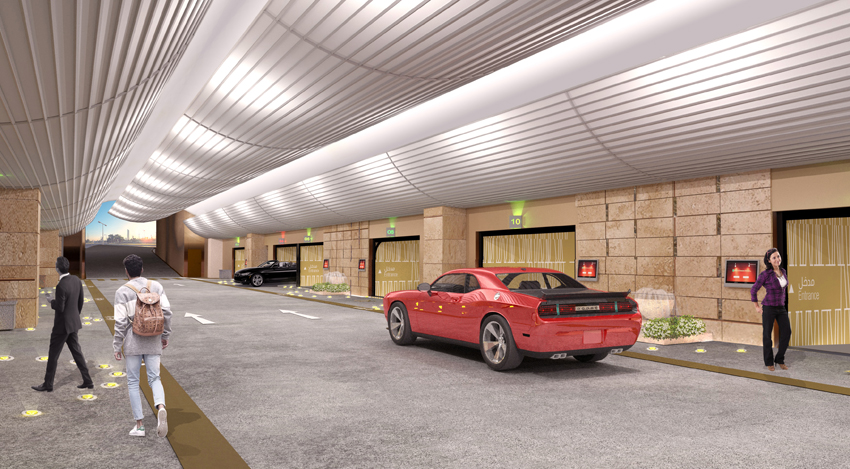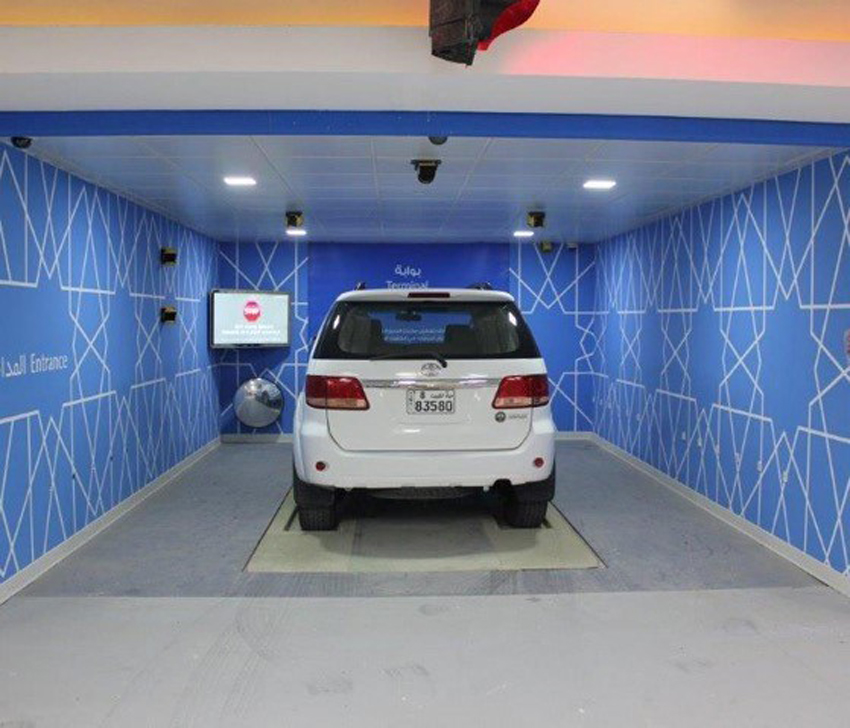The Largest Robotic Parking Systems in the World: Is the United States Ready for This?
How Robotic Parking Systems Work
The process happens in five steps. The user drives the car into a terminal, parks on a steel pallet, collects his or her belongings, and then exits the terminal. The doors to the terminal close. The computer-activated machinery pulls the pallet and car into the facility, and rotates them by 180 degrees. That way, the car is facing forward when it is retrieved. Then, an elevator lifts the pallet and car to an upper level. The pallet is transferred to another carrier that moves it laterally to an open parking spot. The car and pallet are moved into the designated parking spot. When the user returns for the vehicle, the process is reversed.

When the New Palace of Justice in Kuwait is complete, the 2,433-space automated parking system is expected to take the title as the largest automated parking system in the world.
Benefits of Pallet-Based Systems versus Dolly-Based Systems
Pallets are steel plates with grooves on which the vehicle is transported. Grooves in the pallets help drivers easily position their cars. Pallets are about 20 feet long and 7.5 feet wide. Pallets prevent the dripping of oil, acids, air-conditioning condensation, saltwater, snow and ice, or sand onto cars from the parking system machinery or the cars stored inside the facility.
Pallets eliminate all direct contact with the car and guarantee that no machinery ever touches the vehicle. This design feature ensures one of the highest standards of product liability protection for automated parking facilities. Some companies offer a pallet-cleaning mechanism for garages in locations that regularly have snow and ice. This system can remove water, sediments, and salt from pallets.
Several automatic parking systems do not use pallets. These systems use dollies that move under a vehicle and clamp onto its tires to transport it. Dollies used in these systems feature a major technical design flaw that can cause serious damage to low-ground-clearance cars or a chassis that was altered by the owner. The garage owner cannot defend such a damage claim.
With a dolly system, vehicles with a close-to-the-ground base can be scratched, dented, or have their bottom components ripped off altogether as the dollies travel under the vehicle. Electric vehicles have a low clearance from the floor to accommodate a battery pack. For these reasons, non-pallet systems may not accept certain vehicles.

Shown is a rendering of the automated parking garage at the New Palace of Justice in Kuwait.

A pallet system on which a vehicle is transported, as opposed to a dolly system that grabs the wheels, ensures that no machinery ever touches the vehicle.
Throughput Capacity Verification
The big question that arises about automated parking is: How quickly can cars be retrieved? For an accurate assessment, third-party test certification and verification is critical to garage efficiency. Peak traffic throughput capacity equals the total cars per hour in a combination of inbound and outbound traffic. Throughput capacity is more critical than single retrieval time in day-to-day operations.
Reliability and Redundancy
For an automated parking system to work, it must be reliable with redundancies built in. Developers are naturally resistant to include any unproven technologies that might fail. Manufacturers of these systems understand the importance of this fact, and they invest in systems, machinery, and software to prevent outages.
Consider the, the 760-space garage at the Ibn Battuta Gate Complex in Dubai. The system consists of machines built to support independent motions on all three axis: vertically between floors, horizontally in a row, and in and out to move cars into and out of racks in the shelving system (made of steel, concrete, or a mix of precast concrete and steel). Independent machines are a key factor in the system’s reliability.
At least two of each type of machine are installed per area in the automated parking facility for redundancy. Both of the machines can perform the same tasks at the same time. Therefore, if one machine needs maintenance or repair, there is always a backup machine to keep the cars moving into and out of the garage.
No single failure will ever result in the system being inoperable. Performance for the robotic parking systems used in these largest of installations, based on operational and maintenance data over the past 16 years, is 99.9 percent uptime.
Forty robotic machines are used at the 765-space Ibn Battuta Gate Complex garage, for example. If one machine fails or needs maintenance, that is only 2.5 percent of the total robots in the garage. In this scenario, the only consequence of a robot failure is that a few cars take about 200 seconds for retrieval instead of 160 seconds.
Machine redundancy is complemented by other fail-safe features, such as true redundant computer servers, universal power supply, and a backup power generator to ensure continual operation.
Anne Marie Shein, then senior property manager for Ibn Battuta Gate, states that after more than three years of operation, “The automated car park is well-maintained and running flawlessly.”









